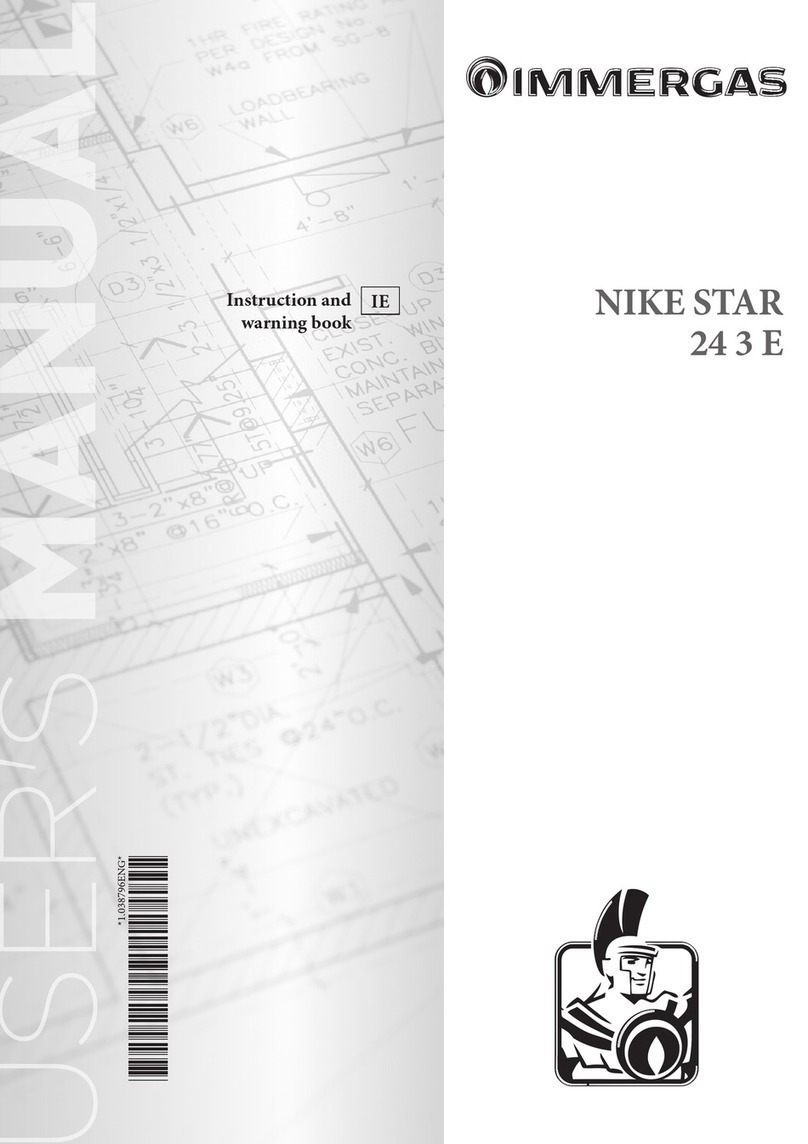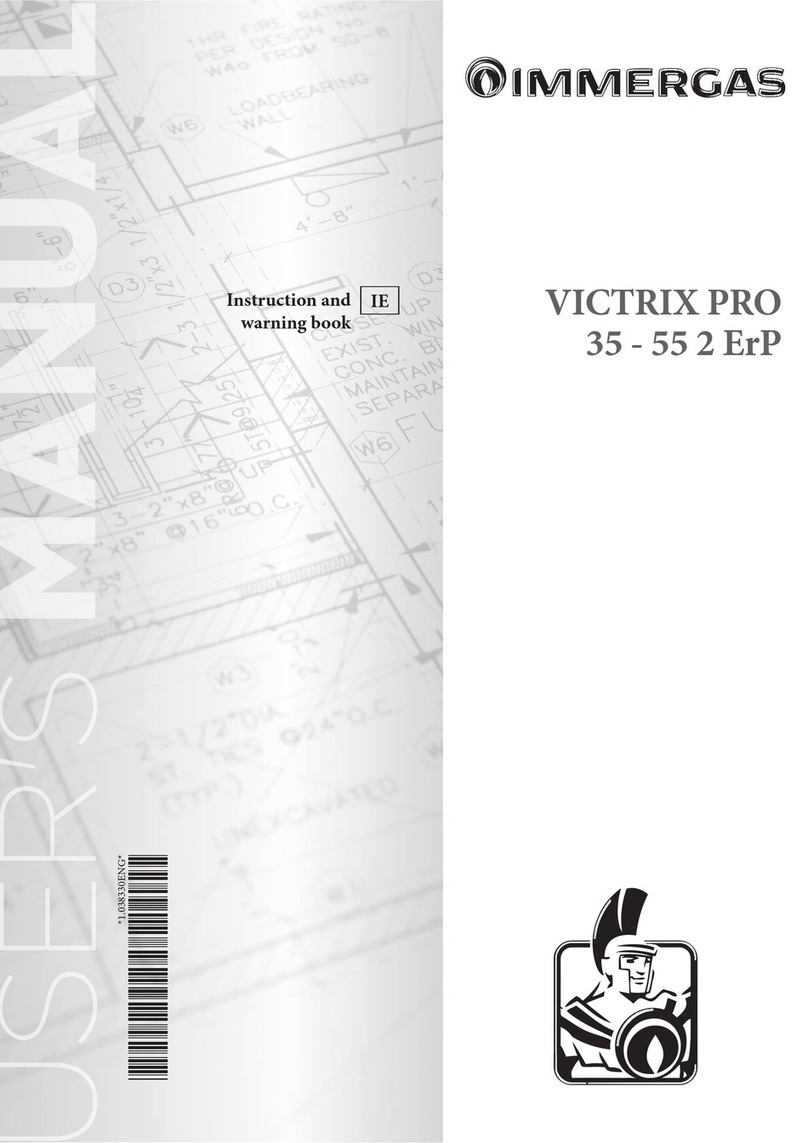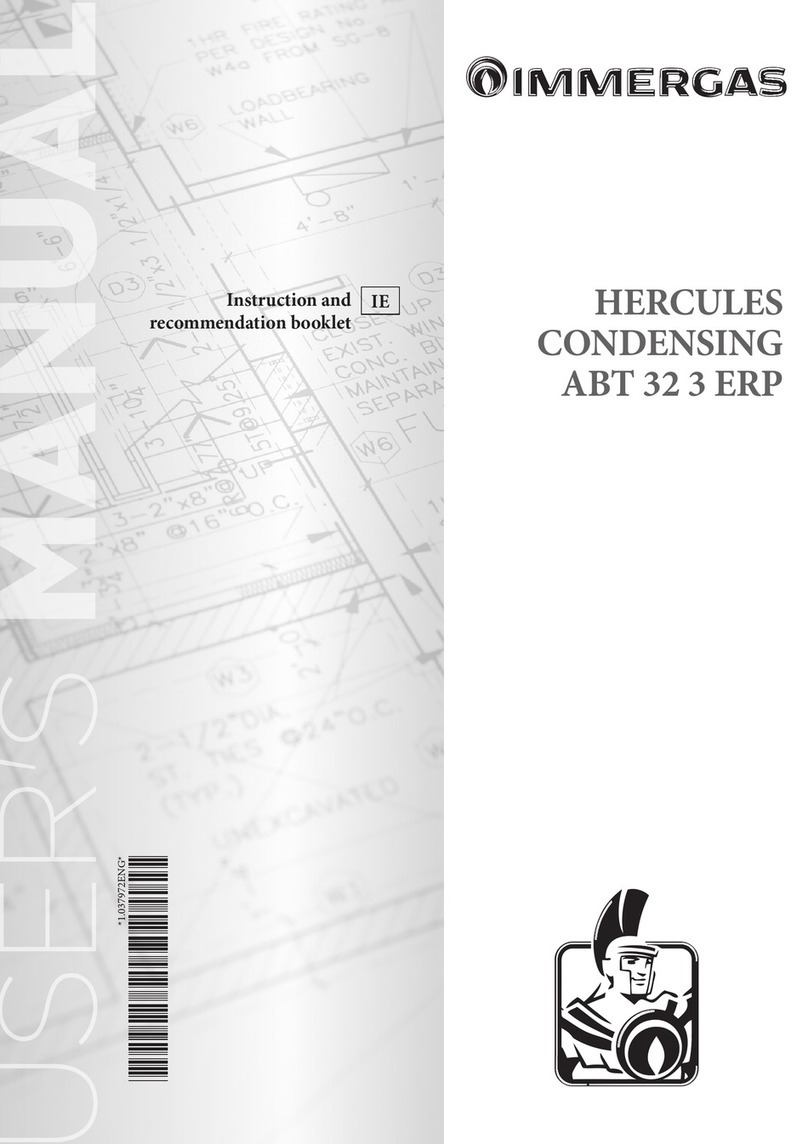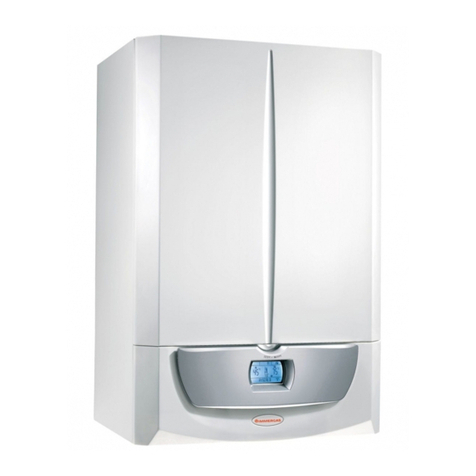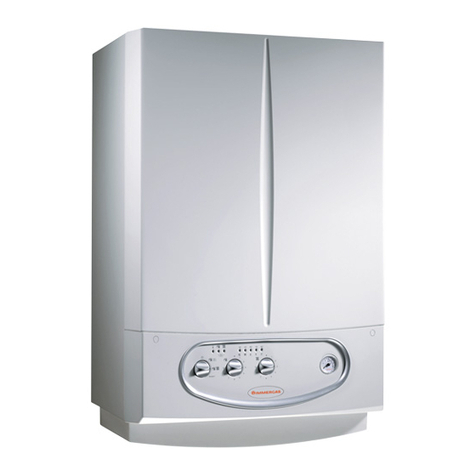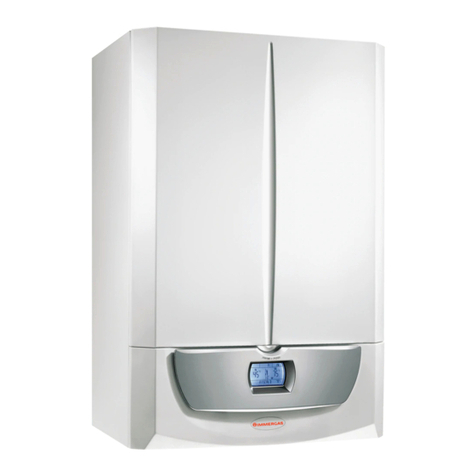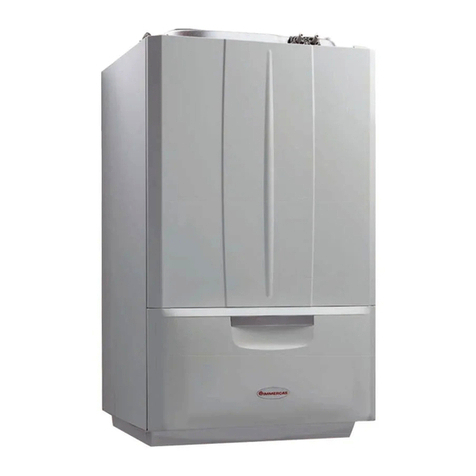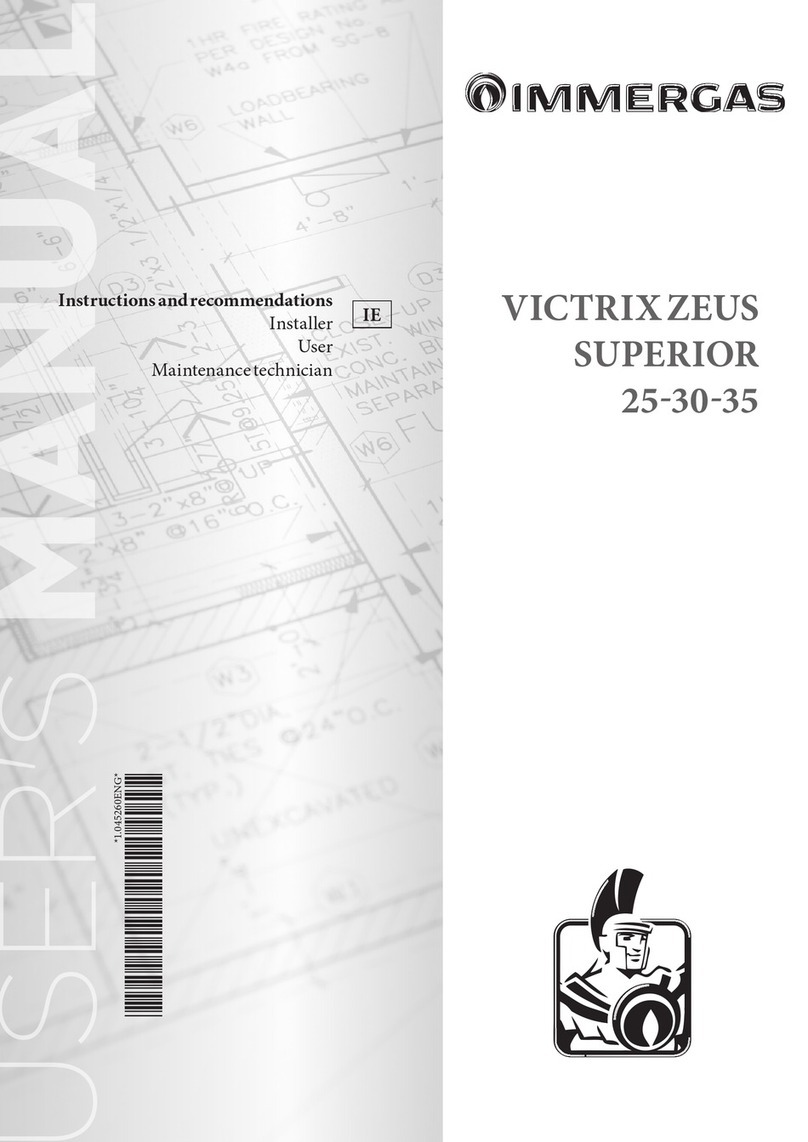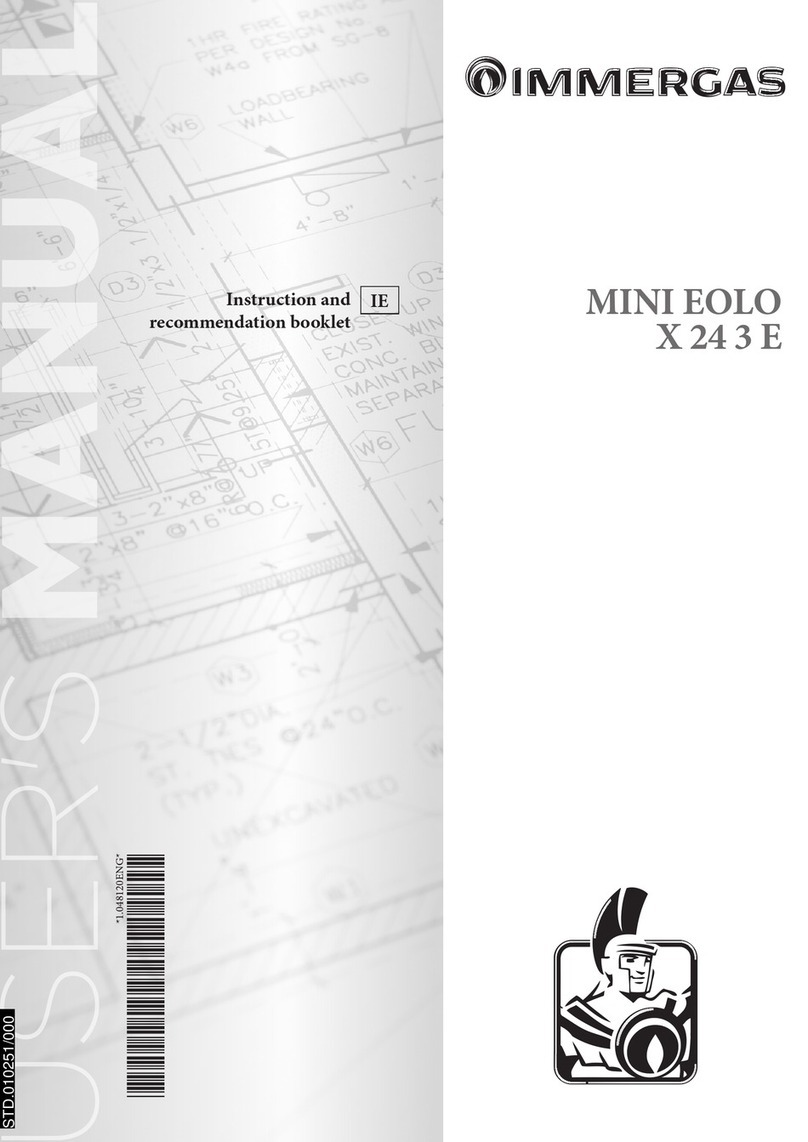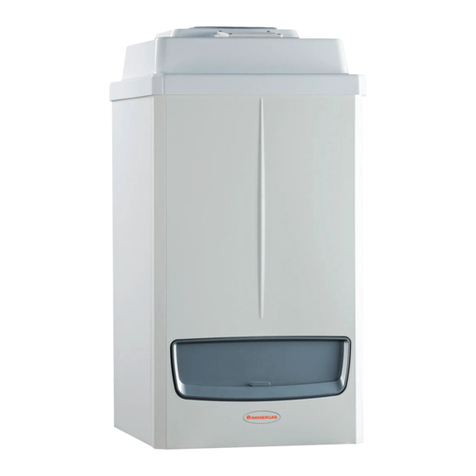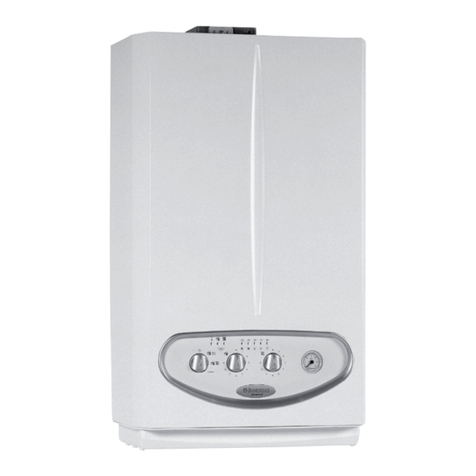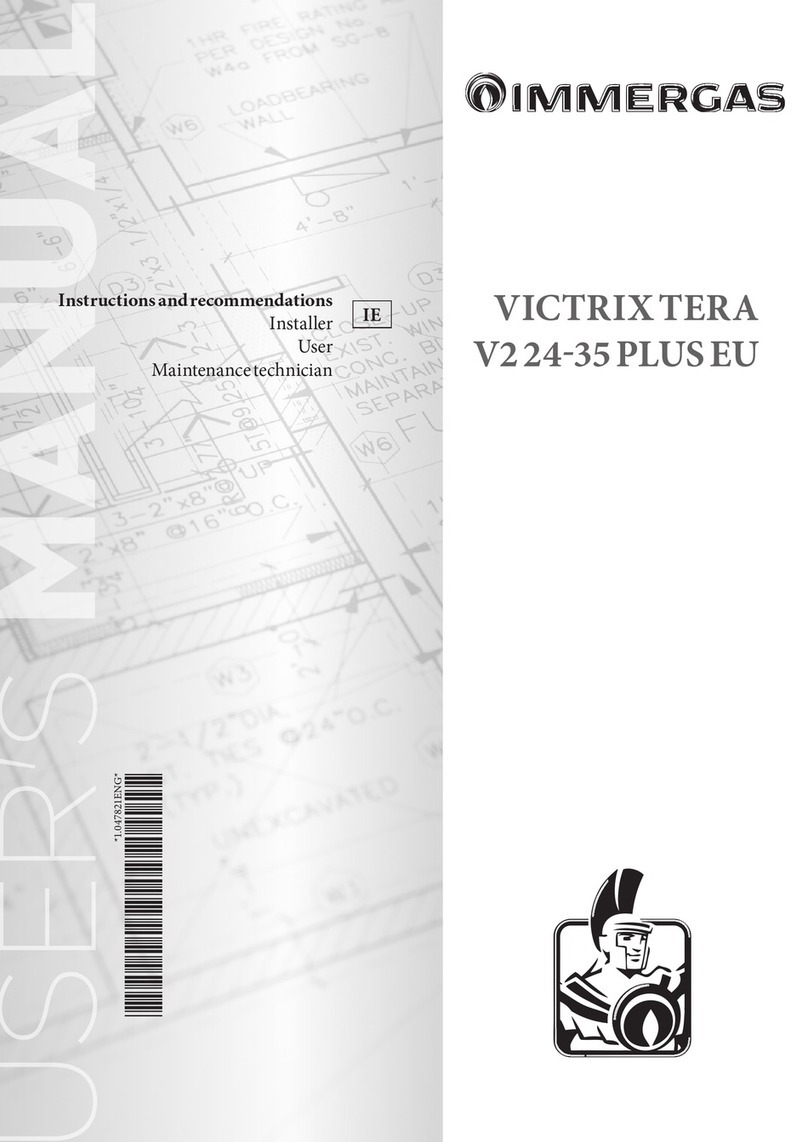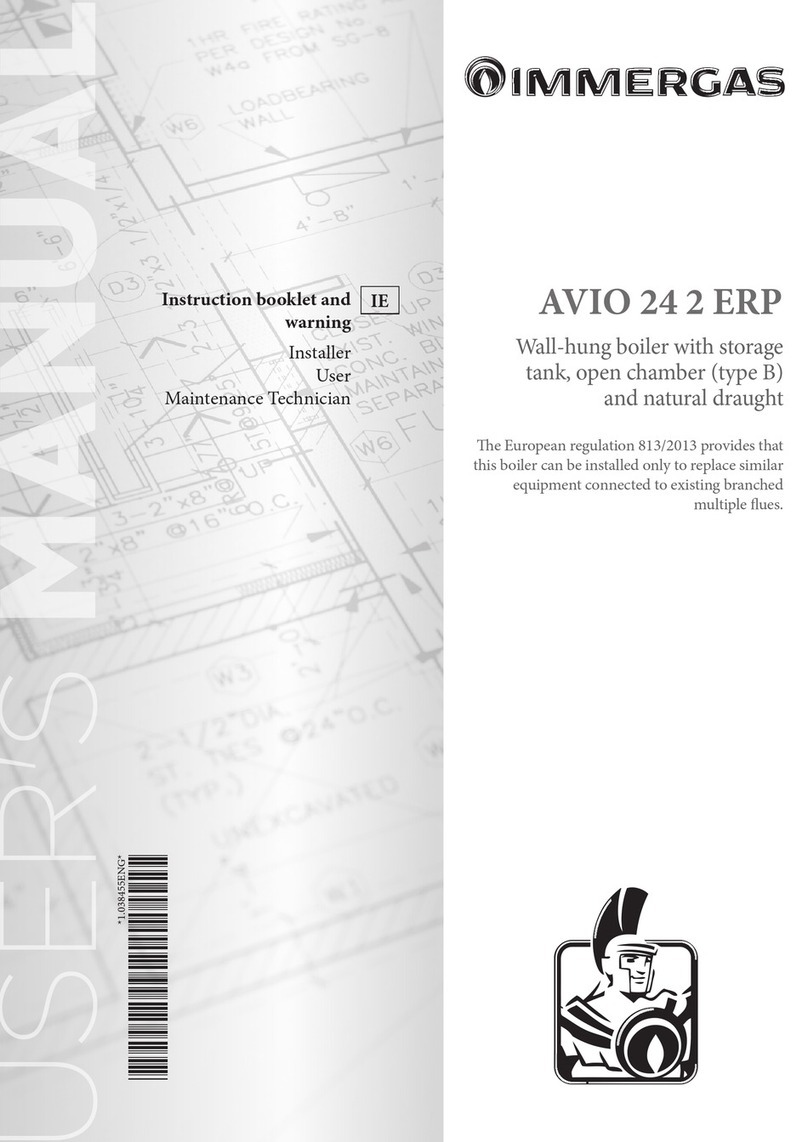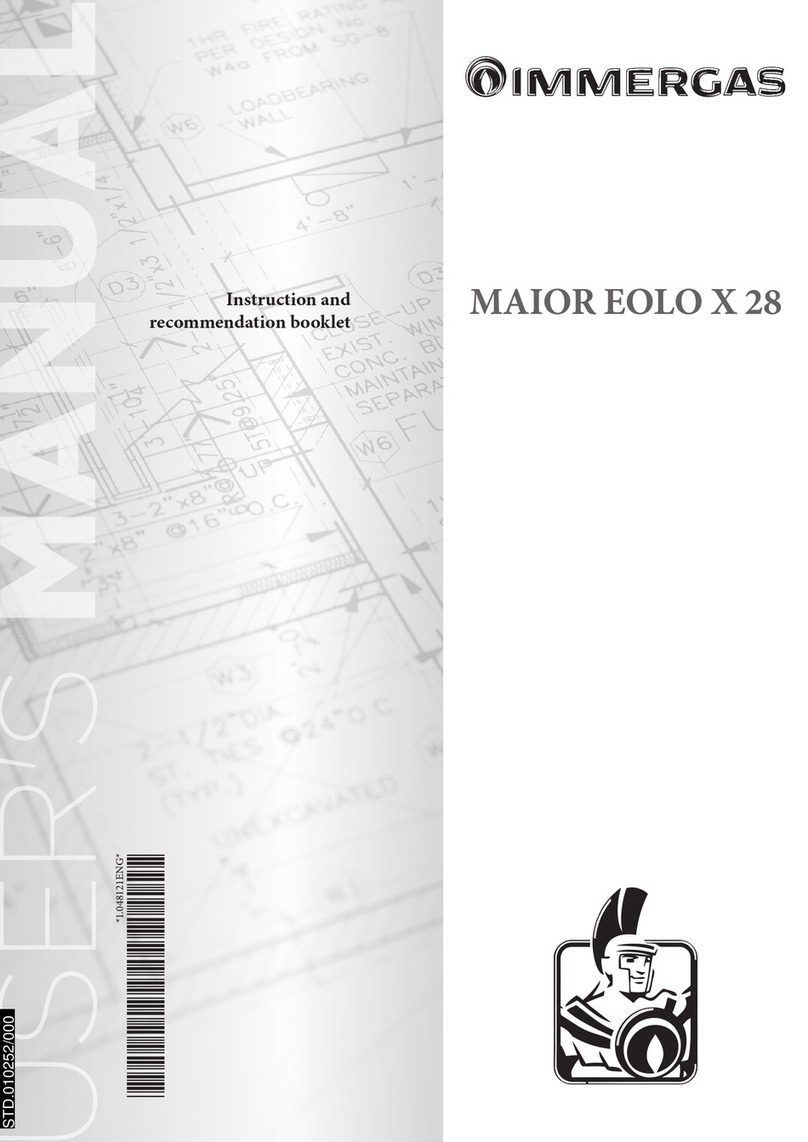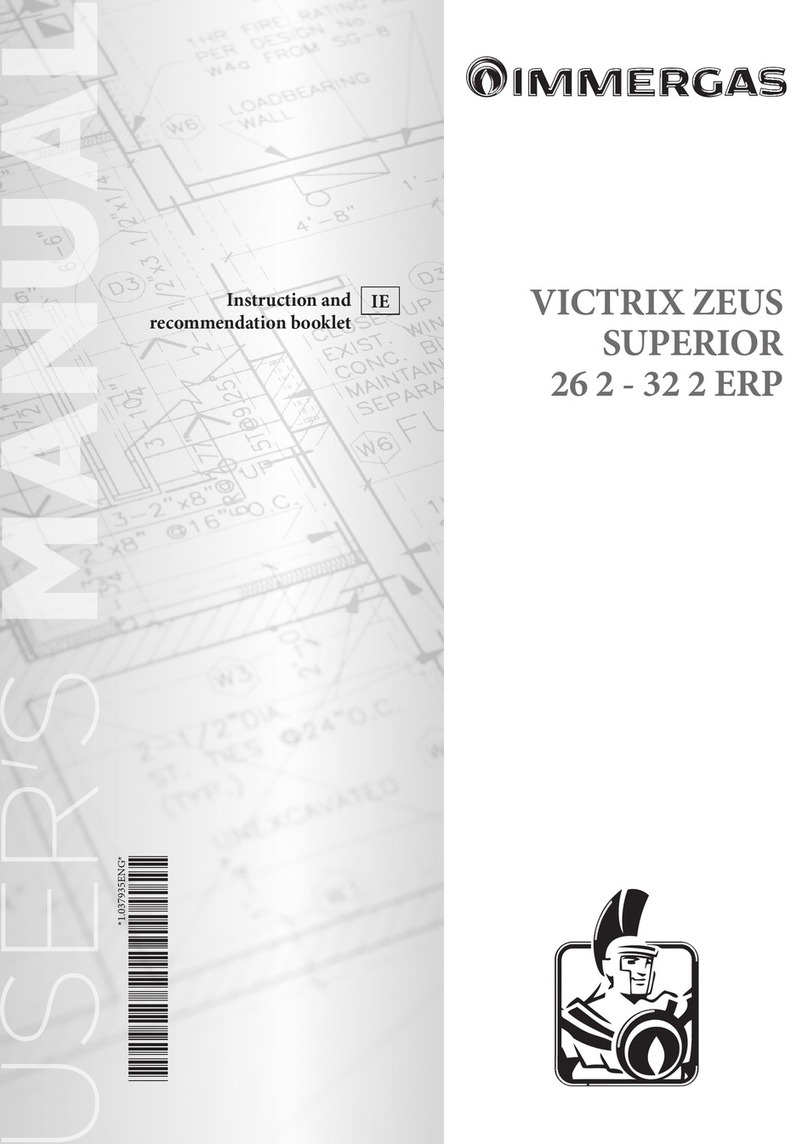
8
45
31
58
INSTALLERUSER
MAINTENANCE TECHNICIAN
Comando Amico Remoto remote controlV2 (CARV2)
On/O digital chrono-thermostat.
Fig. 1-4
Super Comando Amico Remoto
remote control (Super CAR)
Fig. 1-5
Fig. 1-6 Fig. 1-7
TM-MAX/MIN = Selected ow temp. range.
TE = External temperature.
EXTERNAL PROBE
Correction law of the ow temperature
depending on the external temperature
and user adjustments of the central heating
temperature.
1.5 REMOTE CONTROLS AND
ROOM CHRONOTHERMOSTATS
OPTIONAL.
e boiler is prepared for the application of room
chrono-thermostats or remote controls, which
are available as optional kits.
All Immergas chrono-thermostats are connected
with 2 wires only. Carefully read the user and
assembly instructions contained in the accessory
kit.
• On/O digital chrono-thermostat (Fig. 1-4).
e chrono-thermostat allows:
- to set two room temperature values: one for
day (comfort temperature) and one for night
(lower temperature);
- set a weekly program with four daily switch-
on/o;
- selecting the required function mode from
the various possible alternatives:
- manual operation (with adjustable
temperature).
- automatic operation (with set program).
- forced automatic operation (temporarily
modifying the temperature of the automatic
program).
e chrono-thermostat is powered by two 1.5V
LR 6 type alkaline batteries.
• ere are two types of remote controls available:
Comando Amico Remoto remote control
V2 (CARV2) (Fig. 1-4) and Super Comando
Amico Remoto remote control (Super CAR)
(Fig. 1-5) both with room chrono-thermostat
functioning. In addition to the functions
described in the previous point, the chrono-
thermostat panels enable the user to control all
the important information regarding operation
of the appliance and the central heating system
with the opportunity of easily intervening on
the previously set parameters without having to
go to the place where the appliance is installed.
e panel is provided with self-diagnosis to
display any boiler functioning anomalies.
e climate chrono-thermostat incorporated
into the remote panel enables the system ow
temperature to be adjusted to the actual needs
of the room being heated, in order to obtain
the desired room temperature with extreme
precision and therefore with evident saving in
running costs. e chrono-thermostat is fed
directly by the boiler by means of the same 2
wires used for the transmission of data between
boiler and chrono-thermostat.
Important: if the system is subdivided into
zones using the relevant kit, the CAR V2 and
the Super CAR must be used with its climate
thermostat function disabled, i.e. it must be set
to On/O mode.
CARV2, Super CAR or On/Off chrono-
thermostat electrical connection (Optional).
e operations described below must be performed
after having removed the voltage from the
appliance. e eventual On/O environment
chrono-thermostat must be connected to clamps
40 and 41 eliminating jumper X40 (Fig. 3-2).
Make sure that the On/O thermostat contact is
of the “clean” type, i.e. independent of the mains
supply, otherwise the P.C.B. would be damaged.
Any CARV2 or Super CAR must be connected
by means of terminals IN+ and IN- to terminals
42 and 43 on the circuit board, eliminating
jumper X40 and respecting polarity (Fig. 3-2).
Connection with the wrong polarity prevents
functioning, but without damaging the Remote
control. e boiler can only be connected to one
remote control.
Important: if the Comando Remoto remote
control is used, arrange two separate lines in
compliance with current regulations regarding
electrical systems. No boiler pipes must ever be
used to earth the electric system or telephone
lines. Ensure elimination of this risk before
making the boiler electrical connections.
Installation with system operating at direct
low temperature. e boiler can directly feed a
low temperature system by acting on parameter
“P66” (Par. 3.8) and setting the ow temperature
adjustment range “P66/A” and “P66/B”. In this
situation it is good practice to insert a safety
device in series with the power supply and boiler.
is device is made up from a thermostat with
a temperature limit of 60°C. The thermostat
must be positioned on the system delivery pipe
at a distance of at least 2 metres from the boiler.
1.6 EXTERNAL TEMPERATURE PROBE
OPTIONAL.
e boiler is prepared for the application of the
external probe (Fig. 1-6), which is available as
an optional kit. Refer to the relative instruction
sheet for positioning of the external probe. e
probe can be connected directly to the boiler
electrical system and allows the max. system
ow temperature to be automatically decreased
when the external temperature increases, in
order to adjust the heat supplied to the system
according to the change in external temperature.
The external probe always operates when
connected, regardless of the presence or type of
room chrono-thermostat used and can work in
combination with Immergas timer thermostats.
e correlation between system ow temperature
and external temperature is determined by the
parameters set in menu “M5” under “P66”
according to the curves represented in the
diagram (Fig. 1-7). e electric connection of
the external probe must be made on clamps 38
and 39 on the boiler P.C.B. (Fig. 3-2).

